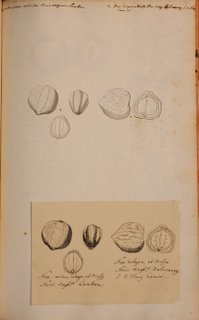josef george kamel, s.j. drawing of candle nut and leaf


Candle nut Tree. Lumbang or lumban (Aleurites moluccana) is the state tree of Hawai’i where its fragrant white flowers are strung into leis. Known by its English name candlenut tree, it also called Indian walnut and KuKui. In Bahasa Indonesia it is known as kemiri. The flowers produce a small brown fruit about two inches in diameter. The fruit is not eaten because its rind is thick and there is very little pulp. Inside are two large oil-bearing seeds, from which the tree gets its English name. Common through out Polynesia and insular Southeast Asia, the lumbang’s seeds are stuck to sharpened sticks, which are made to stand vertically. The impaled seeds are then lit and they produce a bright flame just like a candle, hence the name.
The lumbang seed has other uses, one I discovered in Bali where the kemiri’s white seed is ground and may be mixed with other ingredients like cloves and used coffee grounds or finely ground pumice for the lulur mandi, the body scrub of Bali (pure ritual and sensual indulgence) that concludes in a warm bath in a tub of water mixed with goat’s milk and the petals of three kinds of flowers.
The Philippine spa industry has yet to discover this tree, endemic to the archipelago, and after which places have been named, like Lumban in Laguna province, more known for embroidery than for the tree after which it is named.

0 Comments:
Post a Comment
<< Home